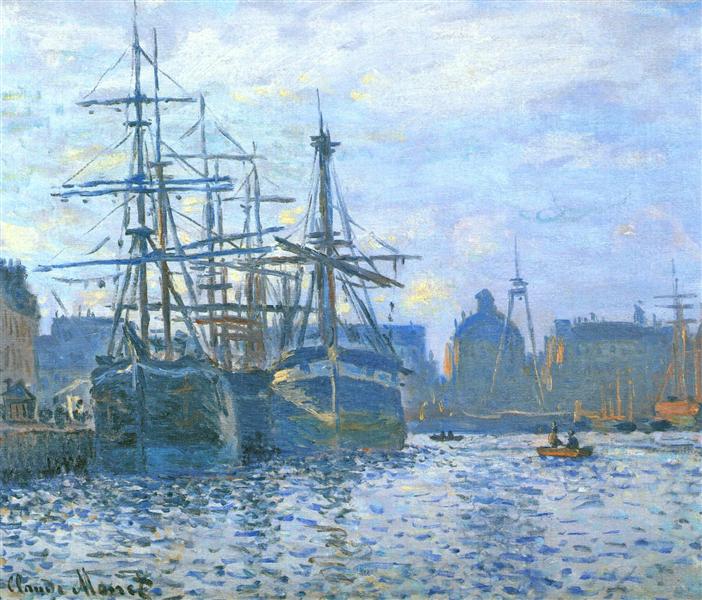Description
The painting "El Havre - the CLAUDE MONET trade basin, made in 1874, is a work that testifies to the mastery of the master Impressionist in the representation of light and water, as well as its connection with the modernity that characterized the time. This painting, which is part of the Kunstmuseum Basel collection, underlines Monet's fascination for industrial transformation and the dynamism of port life in Havre, one of the most important cities in France in terms of maritime trade.
At first glance, the composition of this work is notable for its use of diagonal lines that guide the viewer's gaze through painting. The trade basin is filled with ships, which appear in different sizes and postures, some anchors and others sailing gently. This nautical deployment not only represents the daily life of the port, but also evokes a sense of movement and energy, distinctive characteristics of the impressionist style that Monet and its contemporaries promoted.
The use of color in this paint is particularly outstanding. Monet applies a range of blue and green that are mixed with touches of orange and yellow, suggesting the interaction between water and sunlight. These vibrant colors are not only a representation of reality, but an emotional interpretation of the landscape. The technique of loose and fast brushstrokes reveals Monet's ability to capture the essence of the moment, leaving us with a more than a precise description. This color application technique is a characteristic seal of impressionism, which seeks to capture the temporary conditions of light on the surface of an object.
Although the primary focus of painting is the vessels and the surroundings of the port, it is interesting to notice the almost absence of human figures in the scene, which could be interpreted as a comment on the modernization and mechanization of humanity in the industrialization process . In this sense, Monet, who often sought the interaction of the human being with nature, lets be the ships that narrate the history of commercial interaction and economic activity of the era. The representation of the industry becomes a protagonist in this work, which reflects a transition in the way of life of French society.
This work is also part of the broader context of Monet's work, where the exploration of water -related issues is recurring. As in others paintings Famous as "impression, rising sun", which gave its name to the impressionist movement, "the Havre - the trade basin" captures the light reflecting on the water, inviting the viewer to immerse himself in an ephemeral moment, an idealized vision of port life .
As we observe the work more carefully, it becomes clear that each element is designed with the intention of creating a visual harmony. Monet's choice to represent the port of Havre is not only to document his daily life, but also to explore the beauty inherent in industrial activity, a facet of the modernity in which he lived. This demonstrates his appreciation by landscapes transformed by the hand of man and his evolution based on time and change.
In conclusion, "the Havre - the trade basin" is not only a testimony of Monet's technical mastery, but also a reflection on the relationship between man, industry and nature in a period of change. Monet manages to capture a unique moment in time, inviting the viewer not only to see, but to feel the vibrant life that emanates from the port scene that chose to capture. This work remains a lasting example of how impressionism allowed artists to explore and celebrate the modern world in its fullness.
KUADROS ©, a famous paint on your wall.
Hand-made oil painting reproductions, with the quality of professional artists and the distinctive seal of KUADROS ©.
Reproduction service paintings With a guarantee of satisfaction. If you are not completely satisfied with the replica of your painting, we refund your money 100%.

